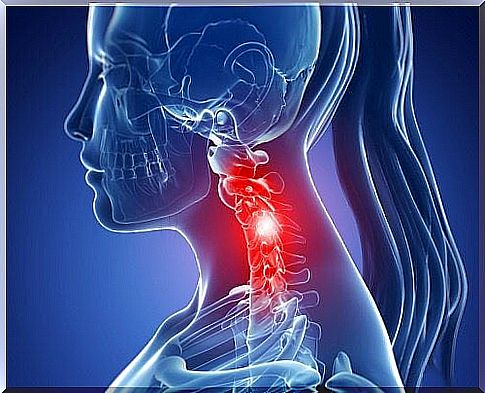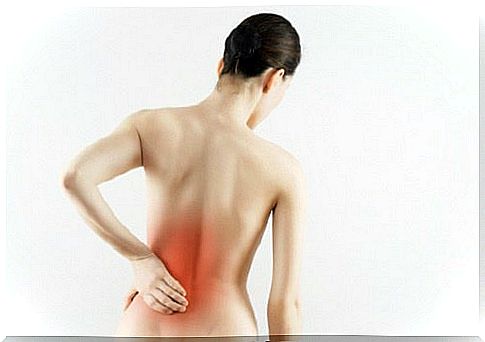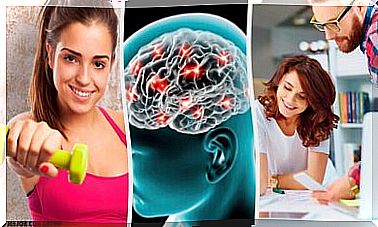How Do Emotions Affect Back Pain?
It is very important to take care of our postural hygiene and not to overload the axis of our body, as this can cause headaches and stomach problems, as well as back pain.

As you know, factors like bone and joint wear and tear, as well as repeated poor posture, can cause chronic back pain.
Despite all these physical factors, we should not overlook the impact that our emotions can have on our entire body.
Indeed, stress, concerns and chronic anxiety, can cause an overload in our back.
Every October 16 of each year is World Spine Day. This is an opportunity to celebrate all the advances in this area and encourage new projects around this theme.
The influence of our negative emotions, tensions and accumulated stress has a direct impact on our back pain.
The weight of emotions on back pain
Often, going through long periods of stress, repressed fears and anxieties that we cannot manage, lead to physiological disorders, such as irritable bowel syndrome or dysfunction of the spine.
You are probably wondering how this relationship is possible. You should know that the brain has a considerable impact on our spine, this axis which draws up our bust.
The notion of column refers to a vertical support that helps to support a weight, while the term vertebral encompasses this incredibly complex set of small bones and joints, which forms the backbone that all vertebrates have.
Our back is actually the most important axis of our body. It is a kind of bone and muscular pillar, which offers us vitality and resistance.
However, sometimes we put all of our negative emotions on him.
Negative emotions produce metabolic changes. This is something proven, which we must take into account.
They alter our hormones and the action of our neurotransmitters, they speed up the production of cortisol in the blood, they increase our heart rate, and they cause changes in all of our organs.
This general acceleration produced by negative emotions results in strong muscle tension, which affects the functioning of our nerves and ligaments.
The spine undergoes all of these variations. It is therefore very common for emotional pain to result in neck or lower back pain.
In the rest of this article, we will see how these emotional problems can affect our backs.
Neck pain

Back pain is not concentrated only in the lumbar area. Indeed, the most frequent pains are localized in the neck.
- The cervicals range from C1 to C7 vertebrae. The first of these is called Atlas, because it supports the weight of the head and gives us good balance.
- For this area to be healthy, there must be balance and harmonious movement.
It is an area of our body that needs great muscle flexibility, so as not to become painful. - This area is the most affected by professional stress and by everyday concerns.
It is a superior musculoskeletal structure, which is greatly affected by work and low-intensity anxieties, which occur throughout the day. - To combat these pains, you have to do mental work every morning, to be able to face the day with more calm and balance.
- You can also perform light and harmonious exercises, drawing circles with your neck. It is a practice that also works with the shoulders.
Chest pain
This is more precisely called the dorsal zone, which is located between the vertebrae D1 and D12.
It represents a large part of our back, our rib cage and our heart. It is an area that is closely connected with our emotions.
How do our emotions affect this part of our back?
It’s very easy to understand, and you have certainly heard of it before:
- A weakened person, who has a bad state of mind or who feels sad, more often tends to look towards the ground, and to have a tilted body axis.
- When a person suffers from the ailments previously mentioned, they do not do physical activity.
She spends a lot of time sitting down, with her neck tilted forward and a diaphragm that doesn’t have the agility it should have. - Everything feels heavy, her breathing slows down, her blood flow decreases, and she may have a headache, stomach ache, or pressure in her chest.
- It all stems from an incorrect postural axis, and an overload of the dorsal region.
It is therefore fundamental to generate movement in our body, by going for a walk or by exposing ourselves to sunlight. - Bringing balance to our back and letting go of our negative thoughts are the two key factors in combating back pain.
Lower back pain

The lumbar area of our back extends from the L1 vertebra, to the L5 vertebra.
It is a part very prone to inflammation, which can result in sciatica pain, or even dysfunction of important organs, such as the bladder or kidneys.
- Besides being related to bone wear and poor posture, this part of our body is also connected to emotions like fear, anxiety and depression.
- People who care too much about others, and forget to take care of themselves, often suffer from pain in this area.
They usually spend a lot of time standing, supporting others, believing that they are not up to the task, or that their efforts will not pay off.
People affected by this pain have the impression of having their backs cut into two pieces.
It is a problem that must be dealt with through a more relaxed life. By prioritizing oneself, and by consulting specialist doctors.
If you suffer from these ailments, try to find a balance within your emotional world.
Remember to do light and harmonious exercises every day.
Also consult a health professional, to prevent your back pain from affecting your quality of life.









